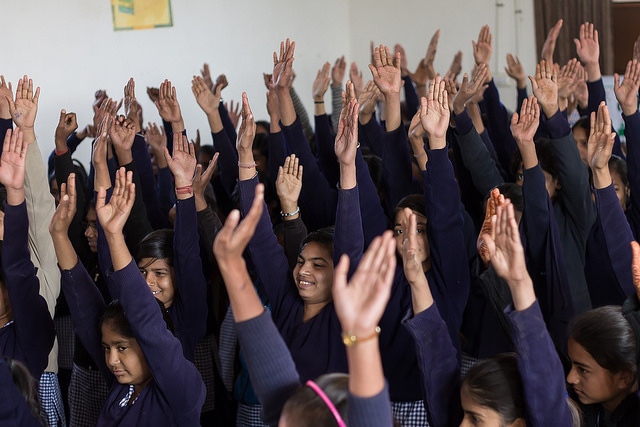Measure smarter not harder: five ways innovators can rise to the challenge of measuring gender equality and empowerment.
Aug 10, 2022
At the Global Innovation Fund, we are committed to providing women and girls with the freedom they need to succeed. One of our core objectives is enhancing the agency of women and girls and we see applying a gender lens to all our investments as a strategic priority.
In 2018, we partnered with Global Affairs Canada (GAC) on a new fund specifically and exclusively focused on finding and funding scalable innovations to transform unequal gender relations and empower the world’s poorest women and girls. Our Innovating for Gender Equality fund aims to demonstrate how innovation can address gender power imbalances, filling a gap in impact-first financing.
In the first half of 2022 we hosted a number of learning events on experiences, challenges and lessons learned from gender outcomes measurement, which assess unequal distribution of resources and opportunities that advantage or benefit males over females due to their sex.
There is no quick fix, however we asked our panellists to share their top lessons that can be applied to innovations of any size and scale.
Here’s what they had to say:
1. It’s really important to understand context – and account for differences
Understanding the context an innovation operates in is crucial for meaningful measurement of impact.Sometimes, metrics need to change to align with new assumptions for the same innovation implemented in a different context, or contextual differences require a shift in the mode of delivery to capture the same metrics. This is where remembering to always refer to your theory of change, and why change may or may not occur, is critical.
2. You may encounter conflicting values on standardisation – try and strike a balance
Often a challenge will lie in identifying standardised measurement tools that have been validated and culturally adapted to a given setting. For instance, 80 per cent of the indicators aligned with SustainableDevelopment Goal 5: Achieve gender equality and empower all women and girls do not have measures available to capture impact. To better integrate gender equality into global health and development, there have been calls for standardised and shared definitions of gender equity and empowerment. In contrast, there can be opposition to using standardised metrics or “homogenising” data indicators and conducting comparative analysis because cultural disparity naturally leads to differing starting points based on religion, access to facilities, social norms, views on family structures, and political landscape.
3. Prioritise the gender metrics you wish to collect
During the data collection and management process, it can be tricky to best ensure data metrics and collection are culturally appropriate and sensitive. Metrics prioritised by governments, or partners helping to scale an innovation, may not tie in with the measurement indicators an innovator is seeking. In addition, there may be the added challenge of defining gender metrics for non-traditional areas or sectors.
It is also vital to remember that prioritising which metrics to collect can be influenced by cultural norms and beliefs – for example, the share of women’s unpaid work at home may be an accepted norm, and not seen as discriminatory.
4. Make sure gender data measurement isn’t compromised during rapid scale-up
Be strategic and keep your eye on your monitoring and evaluation (M&E) frameworks during any period of fast-paced scale-up. This requires reciprocal in-house resources, which can be challenging for smaller organisations. Consider how you would respond so gender data measurement isn’t compromised during a period of fast growth.
5. Don’t lose sight of the long-term outcomes
Measures such as “a change in social norms” are most often observed over long periods of time. With this in mind, it can be arduous to fundraise for – or have the capacity to measure the sustained impact of –long-term outcomes like this. Innovators from GIF-backed Breakthrough shared examples of how they are measuring and capturing social norms outcomes, which included relevant vignettes to test implicit bias; and boys’ and girls’ attitudes towards gender roles, and their own aspirations.
Thank you to representatives from StrongMinds, Breakthrough, Development Media International, MTV,Educate!, BuildHer, No Means No Worldwide, J-PAL, Impact(Ed) International, and GiveDirectly who joined us as presenters and participants.
A special thanks to one of our co-hosts, the EMERGE (Evidence-based Measures of Empowerment forResearch on Gender Equality) project team from the Center on Gender Equity and Health at the University of California San Diego. EMERGE focuses on gender equality and empowerment measures to monitor and evaluate health programmes, and tracks progress on SDG 5. The EMERGE website is a one-stop-shop for gender survey measures for researchers and implementers, complete with various tools and open resources.
